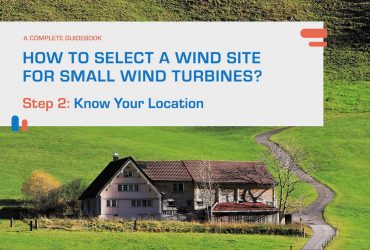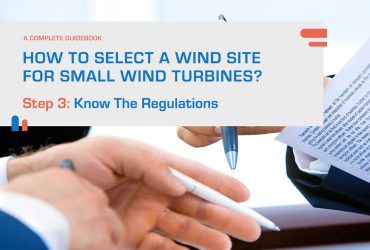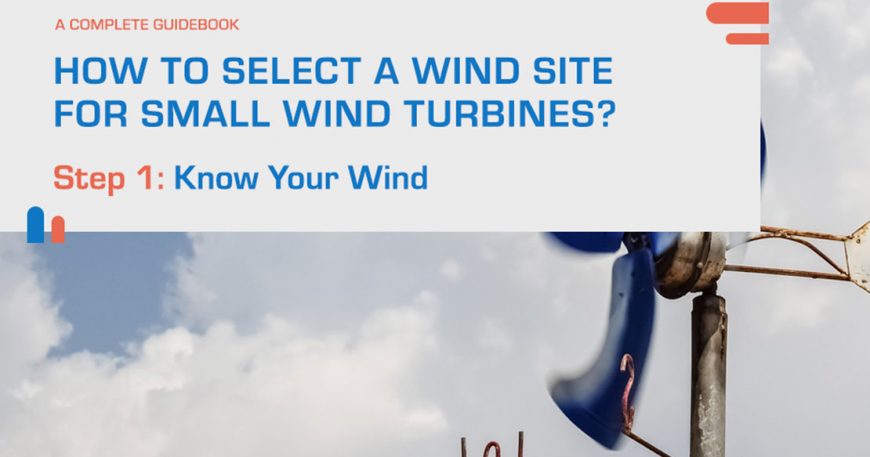
Site selection: Know wind condition
Let’s face it. Investing in a small wind turbine for your household or company might not be the cheapest expense to spend. How can we ensure the wind turbine we install can operate under the most optimal condition and deliver the most electrical power possible? Selecting the right wind site for your small wind turbine is crucial to achieving your renewable energy goal.
How to Select A Wind Site: A Complete Guidebook
“How to Select A Wind Site for Small Wind Turbines?” is a complete guidebook that will guide you through 3 most essential steps of evaluation and assessment for your potential or chosen wind site. You can access the articles on our blog or download the complete guidebook in PDF.
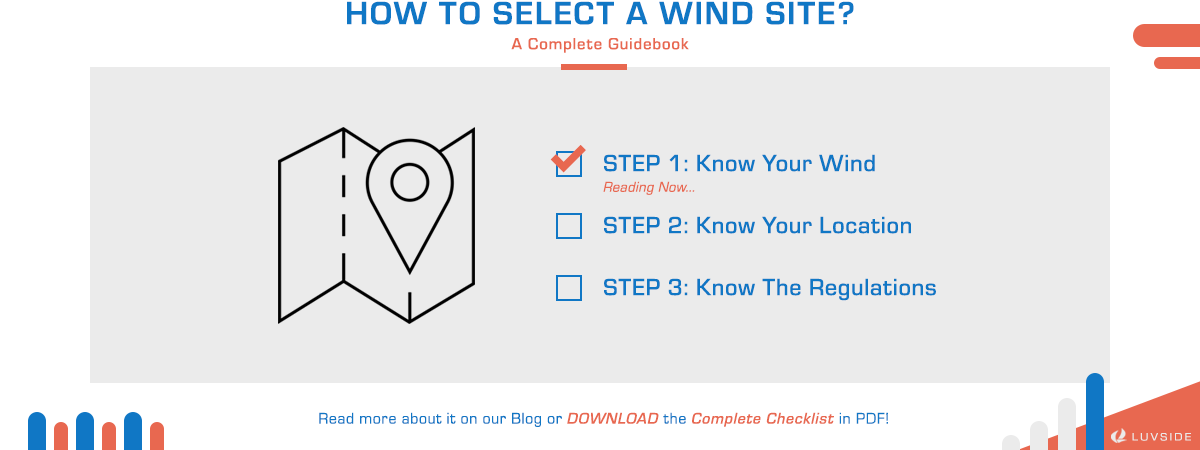
Step 1: Understand your local wind condition
A wind turbine’s performance is highly dependent on the wind resources it receives. When we are selecting a location for a small wind turbine, we always look for locations that provide the best wind resources with higher capacity factors. The rule is simple: The higher the wind speed, the more power generated. The stabler the incoming wind, the smoother the turbine operates.
Understanding your local condition is one of the most essential steps to complete when planning for your small wind turbine. Relevant wind data can help you assess potential power generation performance at your wind site, the stability of electricity supply by wind turbines, and the amount of the resulting financial return. It can also help you select the most suitable wind turbine to install if you haven’t made up your mind yet.
What kinds of wind data do I need to collect?
1. Long-Term Wind Condition Analysis
First and foremost, gather the wind activity data at your chosen wind turbine site continuously for at least 3 months to 1 year. You can do this by setting up an anemometer. However, to acquire accurate information, you need to set up the anemometer at the height of the wind turbine rotor, which can be 10 meters or higher for a small wind turbine.
With an anemometer, you will be able to have a full analysis covering key data such as prevailing wind speed, prevailing wind direction, and incoming wind consistency, as well as other wind characteristics.
2. Long-Term Weather Condition Overview
Secondly, it is always helpful to have an overview of the local weather condition throughout the year even when your small wind turbine is mostly weather-proof. A weather overview provides information about large-scale seasonal wind changes within the region due to storms or other weather patterns. Temperature data can also assist your architectural or engineering experts evaluate their construction plans for the wind turbine.
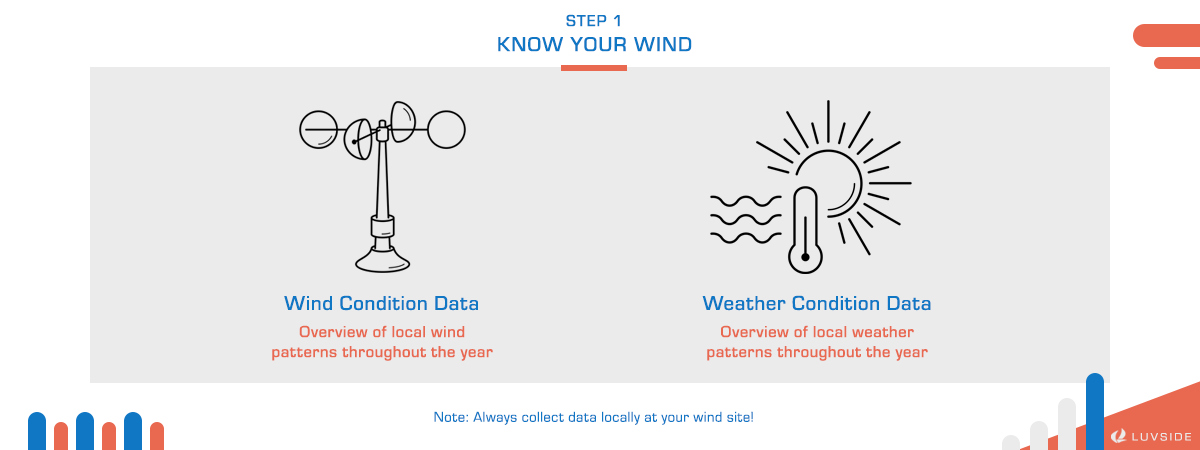
Always conduct measurements locally
Although some people may refer to the national or regional wind map released by weather authorities to estimate the local wind resource, they do not provide enough insights to local site features. These wind maps cannot include wind speed distribution, direction distribution, turbulence intensity, and other wind activities influenced by surrounding landscape and nearby architectural structures. It is always recommended to set up a local anemometer at the appropriate height to acquire the most precise wind assessment report.
Next Step: Evaluate your location for turbine installation
Once you have enough wind data about your local wind site, you can move on to assessing the location environment and construction regulations, which are closely tied to the installation of a small wind turbine.
Read more about the next two steps in selecting a wind site on our blog or download the complete guidebook in PDF.
Related Content
Selecting the most suitable location for your small wind turbine isn’t only about picking where the most wind goes. A wind turbine needs to be...
You have enough wind resources. You have the perfect location for your wind turbine. Now, it’s time to build it. Unfortunately, installing a wind turbine...
